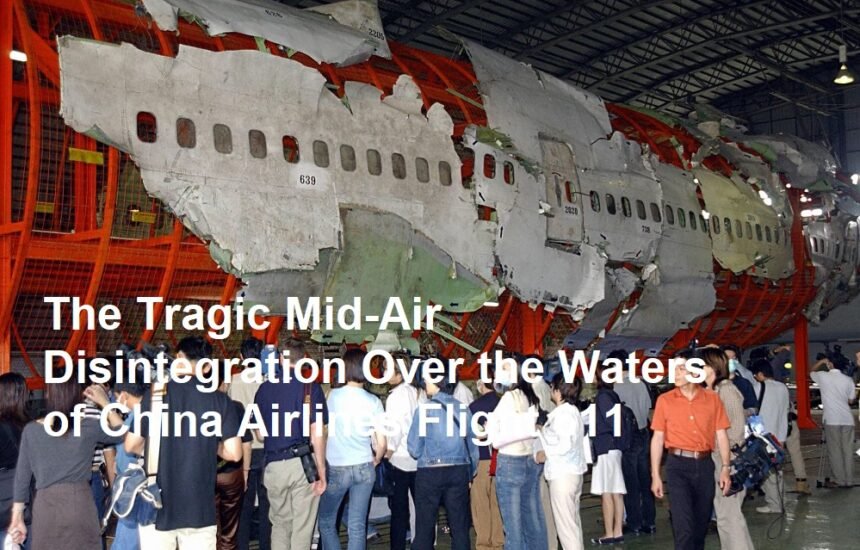On May 25, 2002, China Airlines Flight 611 met a tragic fate that would leave an indelible mark on aviation history. The Boeing 747-200B, operating on a routine flight from Chiang Kai-shek International Airport in Taiwan to Hong Kong, disintegrated in mid-air, with every passenger and crew member plunging into the cold, unforgiving waters of the Taiwan Strait. This catastrophe, which claimed 225 lives, is a stark reminder of the critical importance of stringent maintenance and safety protocols in aviation.
The flight had proceeded normally for the first part of its journey. Passengers settled into their seats, expecting a typical voyage filled with anticipation and the comfort of modern air travel. However, as the aircraft reached cruising altitude, a catastrophic structural failure occurred. Witnesses on the ground reported seeing what appeared to be a sudden explosion or break-up high above the sea. In reality, the airplane began to disintegrate in mid-air, with large sections of the fuselage separating and falling into the churning waters below.
Rescue teams and maritime authorities soon launched an extensive search and recovery operation in the Taiwan Strait, but the efforts were ultimately in vain. The vast expanse of water and the rapid dispersal of debris made the recovery of remains and fragments a daunting challenge. The tragedy left families, friends, and the aviation community in deep mourning, as the full extent of the disaster unfolded slowly through the painstaking work of investigators.
The subsequent investigation into the incident revealed a disturbing truth. Years earlier, the aircraft had been involved in a minor accident that resulted in significant structural damage. The repairs conducted at the time were found to have been substandard, leaving the aircraft with a latent structural weakness. Over time, repeated stress cycles and the relentless pressure of normal flight operations exacerbated this flaw, ultimately leading to a catastrophic metal fatigue failure. The disintegration of the aircraft was not an abrupt or unforeseeable event; rather, it was the culmination of a long-ignored defect that had been silently growing worse over decades.
The official report on China Airlines Flight 611 underscored the tragic interplay between human error and the harsh realities of metal fatigue. It was determined that the failure to adequately address the damage sustained in the earlier accident had created a vulnerability that, under the right conditions, would eventually lead to disaster. In this case, the stress on the compromised section of the fuselage finally exceeded its structural limits, causing the aircraft to break apart in the sky.
In the wake of the disaster, the aviation industry was forced to confront uncomfortable questions about aircraft maintenance and safety oversight. China Airlines, along with other carriers operating older fleets, initiated comprehensive reviews of repair procedures and maintenance records. International aviation regulators also tightened their guidelines regarding aircraft repairs, especially for aging models. The story of Flight 611 spurred a global dialogue on how to prevent such tragedies from recurring and emphasized the need for continuous improvement in maintenance practices.
Beyond its technical implications, the tragedy of Flight 611 resonated on a human level. The loss of every passenger and crew member created an immeasurable void for the families and communities affected by the disaster. Memorials were erected, and ceremonies held, as a way to honor those whose lives were cut short. The disaster serves as a somber reminder of the inherent risks of air travel and the critical importance of vigilance in ensuring the safety of every flight.
Today, the legacy of China Airlines Flight 611 lives on as a catalyst for change in aviation safety standards. Its story is one of tragedy, loss, and ultimately, a renewed commitment to protecting lives through rigorous maintenance and operational oversight. The memory of that fateful day continues to urge the industry to learn from past mistakes, ensuring that the skies remain as safe as possible for all who travel them.
The Tragic Mid-Air Disintegration Over the Waters of China Airlines Flight 611

Leave a comment












